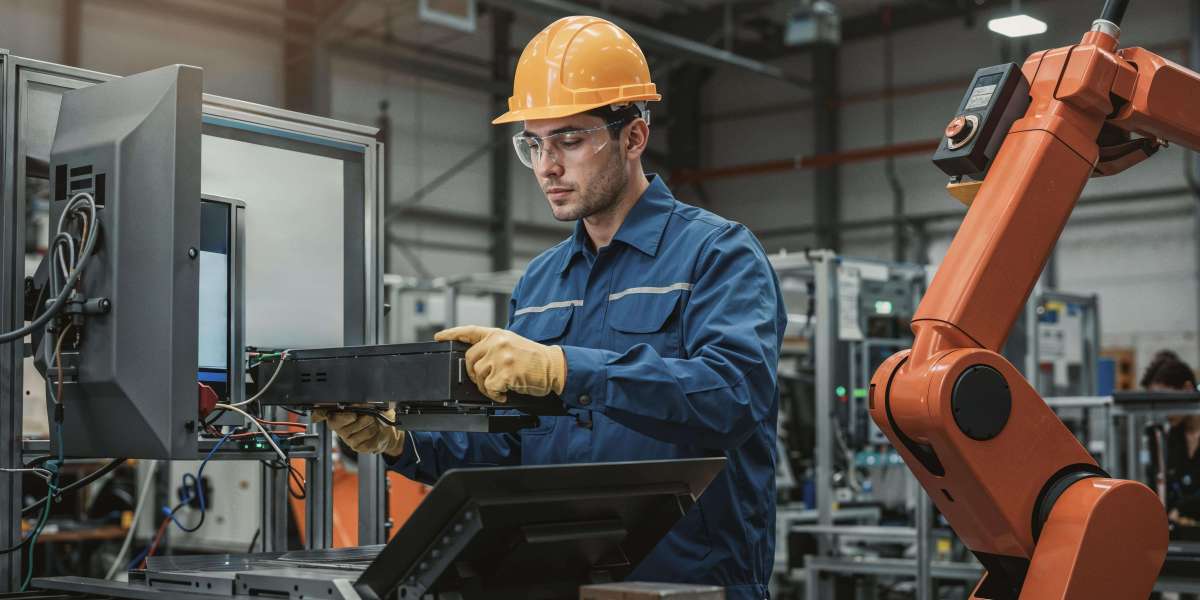A conveyor control system is the backbone of efficient material handling across industries. From manufacturing to logistics, these systems streamline operations by managing conveyor activities with precision. By automating processes, they reduce errors, improve safety, and maximize productivity. Today, businesses of all sizes are investing in advanced conveyor systems to stay ahead of their competition.
If you're considering upgrading or installing a conveyor control system, understanding its benefits, applications, and key components can help you make the most of this technology. Let's break down how these systems work and why they're vital for modern operations.
What Is a Conveyor Control System?
A conveyor control system refers to the technology that manages and operates conveyor belts and other material handling equipment. By integrating sensors, software, and hardware, these systems enable automated monitoring and control. Whether you need to sort packages in a warehouse or transport heavy loads in a factory, conveyor control systems can adapt to various requirements.
These systems rely on programmable logic controllers (PLCs) and human-machine interfaces (HMIs) to provide real-time feedback. This integration not only ensures smooth operations but also offers valuable data for analyzing performance and identifying bottlenecks.
Key Benefits of Conveyor Control Systems
Investing in a conveyor control system comes with several advantages. Here are some of the most notable benefits:
1. Enhanced Productivity
With automation, conveyor systems can handle high volumes of materials quickly and accurately. For example, bottling plants use conveyor controls to ensure that products move efficiently without delays.
2. Improved Safety
A well-designed conveyor control system minimizes accidents by controlling speeds, detecting obstructions, and managing emergency stops. This reduces the risks for workers operating around the equipment.
3. Cost Efficiency
Automation reduces manual labor requirements and operational errors, leading to cost savings over time. Additionally, predictive maintenance features can identify issues before they cause expensive downtime.
4. Accuracy in Operations
Modern conveyor systems can sort, count, and even weigh materials with precision. This is especially useful in industries where quality control is critical.
5. Scalability
As your operations grow, your conveyor control system can be customized or expanded to meet new demands. Whether you're adding more belts or integrating advanced sensors, these systems are designed to evolve with your business.
Applications of Conveyor Control Systems
Conveyor control systems are used in numerous industries. Here are some common areas where they make a significant impact:
- E-commerce: Warehouses use conveyor controls to sort and process orders efficiently, ensuring fast delivery times.
- Automotive: Manufacturers rely on conveyor systems for assembly line production, managing everything from small parts to large chassis.
- Food and Beverage: Conveyor systems ensure seamless packaging, labeling, and distribution in this fast-paced sector.
- Mining and Heavy Industries: Robust systems help transport raw materials like coal, metal, and ore over long distances efficiently.
- Pharmaceutical: Precise control systems are crucial for hygienic and accurate handling of medicines and other sensitive items.
Components of a Conveyor Control System
A fully functional conveyor control system includes several key components:
1. Sensors
Sensors detect the position, speed, and condition of materials on the conveyor. They play a critical role in preventing collisions and managing sorting processes.
2. Actuators
Actuators manage the movement of conveyor belts, including starting, stopping, and adjusting speeds as needed.
3. Programmable Logic Controllers (PLCs)
PLCs are the brains of the system. They process inputs from sensors and control the conveyor system based on programmed rules.
4. Human-Machine Interface (HMI)
HMIs allow operators to monitor and control the conveyor system through a user-friendly interface, improving overall usability.
5. Drives
Drives control the motor speeds, ensuring that the conveyor operates efficiently while maintaining energy consumption.
Partnering with Experts for Reliable Solutions
Choosing the right conveyor control system is a complex process requiring industry expertise. Whether it's selecting the right components or implementing custom solutions, working with a trusted partner can make all the difference. Companies like Xtreme Automation LLC specialize in designing and installing innovative conveyor control systems tailored to your unique needs.
Xtreme Automation LLC combines advanced technology with years of experience to create solutions that improve efficiency, reduce costs, and drive business growth. Their team works directly with clients to optimize material handling processes, ensuring seamless implementation and reliable performance.
Factors to Consider Before Investing
Before installing a conveyor control system, assess these critical aspects:
- Volume of Material: Evaluate your production or handling requirements to choose a system with the appropriate capacity.
- Space Constraints: Consider the layout of your facility to ensure optimal placement of conveyors and components.
- Budget: Determine how much you're willing to spend, factoring in both initial investment and long-term maintenance costs.
- Customization Needs: Identify any industry-specific requirements, such as compliance with safety or hygiene regulations.
Future Trends in Conveyor Systems
Technological advancements continue to enhance conveyor control systems. Emerging trends include:
- IoT Integration: Internet-connected systems allow for real-time tracking and remote management of conveyors.
- Artificial Intelligence: AI-powered controls aid in predictive maintenance, maximizing uptime and efficiency.
- Green Technology: Energy-efficient systems are being developed to reduce environmental impact without compromising performance.
Final Thoughts
A conveyor control system is more than just an operational tool; it’s a strategic investment in the future of your business. By automating material handling, you’ll not only improve efficiency but also gain the flexibility to scale your operations as needed. For tailored solutions and expert guidance, Xtreme Automation LLC is here to help you harness the power of cutting-edge conveyor technology.
If you’re ready to revolutionize your material handling processes, now's the time to explore what conveyor control systems can do for your business. Their impact on efficiency, safety, and cost-effectiveness is undeniable, making them essential for staying competitive in today’s industrial landscape.








